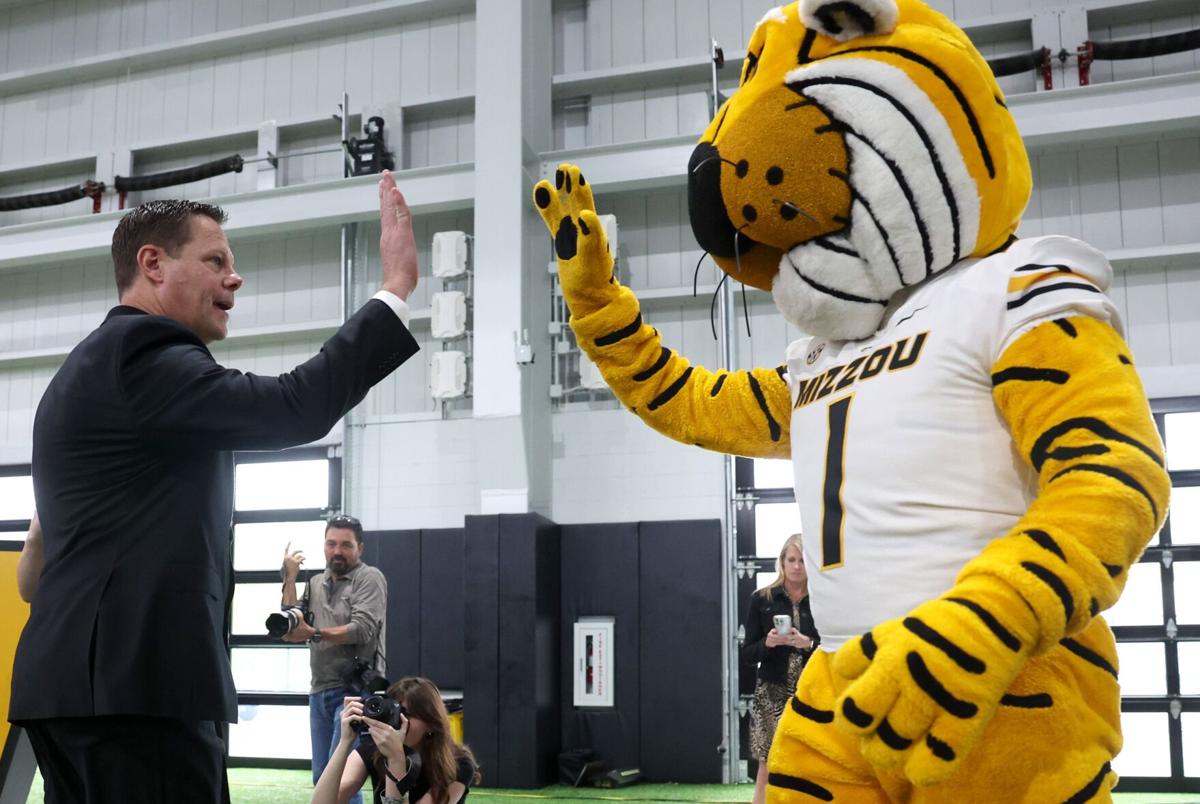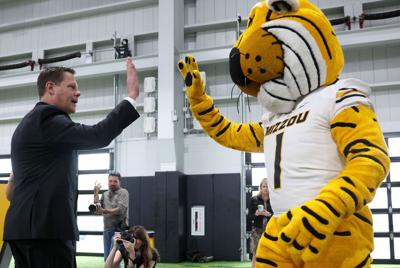COLUMBIA, Mo. — Welcome to the freshest stretch of uncharted territory in the college sports universe. There’s been a lot of this metaphorical sort of land recently, but the post-House settlement landscape is undeniably new.
In case you missed it: The landmark legal settlement in the House v. NCAA case was approved by U.S. Judge Claudia Wilken on Friday night, just a few weeks before the agreement’s new framework for college athletics takes effect on July 1.
As a result, a class of athletes who were unable to profit from their name, image and likeness while they competed will share billions of dollars in back pay. Most of the House settlement’s implications, though, are forward-looking.
Schools can now share up to $20.5 million in revenue directly with athletes. In an attempt to reign them in, NIL deals worth more than $600 will be subject to approval from a clearinghouse called NIL Go.
People are also reading…
None of that arrives as a surprise. Athletics departments have been planning for this reality for months, if not more than a year.
Still, there are questions about how college sports’ revenue-sharing era will go at a place like Missouri.
Some of those questions are procedural and answerable. Mizzou athletics director Laird Veatch declined to speak with media over the weekend but is expected to do so after this week’s National Association of Collegiate Directors of Athletics conference in Orlando, Florida. Unburdened by a need to hedge plans due to ambiguity over whether the settlement would be approved, he will hopefully be transparent about MU’s plans.
Other questions will need time and follow-up lawsuits for resolution. College sports rule changes come with consequences that are unintended but hardly unforeseen, and the settlement will produce some of those ripples.
For now, here are the three most pressing questions facing Mizzou athletics as it enters the revenue-sharing world:
How will MU distribute shared revenue?
In to fans published Sunday, Veatch didn’t offer much he hadn’t said pre-settlement approval. He did, however, clarify that MU will create “more than 60” new athletic scholarships at a cost of roughly $3 million for the next sports year — a byproduct of the settlement, which removes scholarship restrictions.
Veatch has been clear since the fall of 2024 that Missouri will be spending the full $20.5 million in shared revenue on its rosters. What he has yet to specify is how that will be distributed across the 16 sports teams sponsored by MU.
Mizzou FY24 attributable revenue
| ����ǰ��� | FY24 revenue | % of attributable FY24 revenue |
|---|---|---|
| Football | $56,307,996 | 73.10% |
| Men's Basketball | $16,461,185 | 21.37% |
| Wrestling | $899,749 | 1.17% |
| Softball | $752,718 | 0.98% |
| Women's Basketball | $745,492 | 0.97% |
| Women's Golf | $433,606 | 0.56% |
| Volleyball | $348,746 | 0.45% |
| Baseball | $307,788 | 0.40% |
| Gymnastics | $281,978 | 0.37% |
| Men's Golf | $182,930 | 0.24% |
| Men's Swimming & Diving | $89,852 | 0.12% |
| Soccer | $81,283 | 0.11% |
| Women's Swimming & Diving | $79,009 | 0.10% |
| Men's Track & Field, Cross Country | $26,106 | 0.03% |
| Women's Track & Field, Cross Country | $20,058 | 0.03% |
| Tennis | $13,282 | 0.02% |
The general rule of thumb across college sports is that football teams will get 75%, men’s basketball 15%, women’s basketball 5% and the remaining 5% distributed across the remaining sports. That would be roughly $15.4 million for football, $3 million for men’s basketball, $1 million for women’s basketball and another $1 million across the others.
It would be surprising if Mizzou deviated from that formula to any significant degree, but it’s still an important recipe to get on the record.
In fiscal year 2024, which comprises the 2023-24 sports year and is the most recent available financial snapshot of MU athletics, football brought in 73% of the department’s revenue considered attributable to a specific sport. Men’s basketball brought in about 21%.
Giving football three-quarters of the revenue sharing pool would be commensurate with the money that program brings in, but giving men’s hoops 15% would be a slight step down — but 90% of the funds would go to the two sports that haul in a combined 94% of Mizzou’s attributable revenue.
While 13 teams get lumped into the “others” category that will split somewhere around 5% in revenue sharing, that exact formula could be telling at a school like MU.
Outside of football and men’s basketball, wrestling was the biggest earner in Missouri’s FY2024. Gymnastics, which was ninth among the school’s programs in revenue generation, is coming off the best season a Mizzou sports team has had in a while. Veatch has pledged more investment in a baseball program that sat eighth in revenue. Which becomes a priority?
Can donor, NIL base sustain contributions?
To those who’ve seen rumored compensation figures for college football and men’s basketball stars, the aforementioned revenue-sharing pool of $20.5 million seems like too little. It is.
National stories peg top-level college football rosters at $30 million or more. Top-level basketball rosters run above $15 million.
Even if Mizzou is below that level, it will need to be able to provide NIL funds on top of the revenue sharing to be competitive in the Southeastern Conference.
Can Missouri get those deals, which now need to be approved by the NIL Go clearinghouse, lined up? Are they sustainable?
MU is far from unique in that it has asked donors for a lot to sustain the skyrocketing spending taking place across college sports — a trend showing no sign of slowing down. Veatch has been preaching a need for more corporate support of Mizzou athletics.
He continued that message in his weekend open letter: “We will be asking the Mizzou business community to embrace these (NIL) opportunities and will provide more information in the near future.”
Getting that quite literal buy-in might well be shifting from a luxury to a need.
Should Mizzou follow new rules?
An important preface here: This is not an insinuation that Missouri, or any school in particular, will bypass some of the new rules created by the House settlement. A couple of weeks ago, all 16 SEC schools signed an agreement that they’ll play fairly.
How many did so with a wink?
If ever there were rules made to be broken, the NIL clearinghouse policies fit that bill. NIL Go will determine whether each reported deal falls within an approved range of compensation.
Range of compensation “is anchored in valuation principles to determine if a student-athlete’s third-party NIL compensation is commensurate with compensation paid to similarly situated individuals with comparable NIL value,” reads . “The RoC is a deal level calculation that is intended to capture a student-athlete’s unique NIL value based upon multiple factors, including but not limited to, the deal’s performance obligations, the student-athlete’s athletic performance and social media reach, the local market and the market reach of his or her institution and program. The RoC will also be informed by external benchmarks.”
That’s hardly airtight. And what if the clearinghouse, say, never finds out about a deal? There seems to be a real risk that college sports relapse into under-the-table payments with this model.
Scrutiny into NIL deals could be a good thing, but how likely is it to stop anyone? Aside from any legal challenges of this clearinghouse system (which experts think will arise), it feels like a matter of if, not when, a school challenges the new rules by not following them.
A level playing field sounds great, but is that what the new NIL landscape will be? The House settlement stands to test rule-following just as much as it tests revenue generation.
Mizzou football coach Eli Drinkwitz speaks with the media on Wednesday, April 9, 2025. about the NCAA House settlement lawsuit. (Video by Mizzou Network, used with permission of Mizzou Athletics)

















